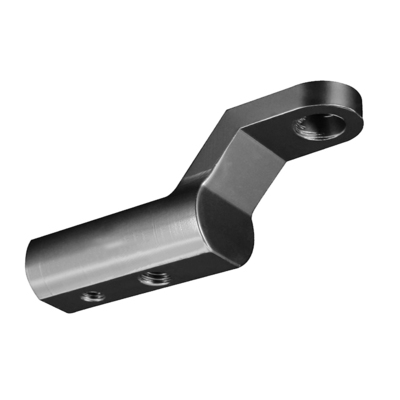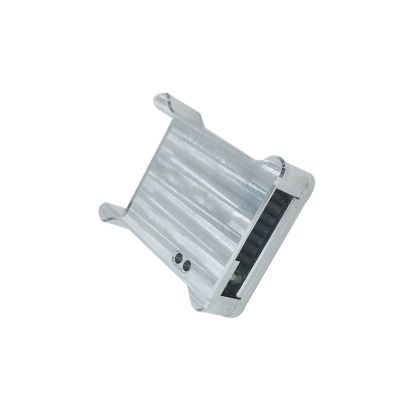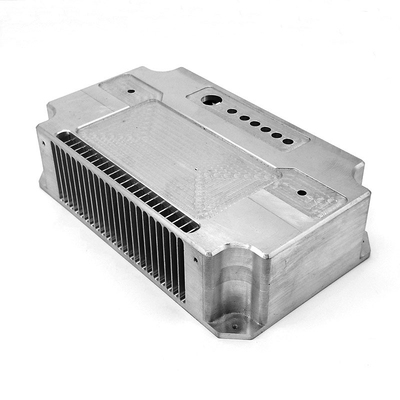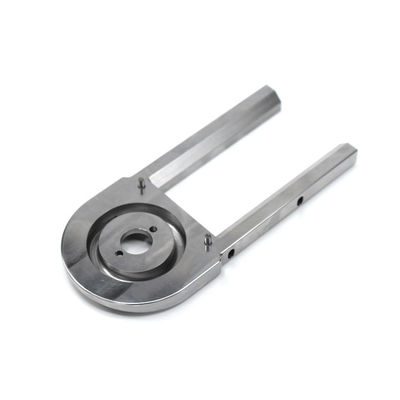Do you know that there is so much attention to pipe welding?
The performance of the pipeline welding equipment should meet the welding process requirements, and should have good working conditions and safety performance. Before welding construction, the welding procedure pre-regulation should be formulated and the welding procedure qualification should be carried out. The welding procedure specification shall be prepared according to the qualified welding procedure qualification report, and the welder shall have the corresponding qualification certificate issued by the relevant state department.
In any of the following environments, welding is not allowed unless effective protective measures are taken:
1. Rain and snow weather;
2. The relative humidity of the atmosphere is greater than 90%;
3. Arc welding with low hydrogen electrode, the wind speed is greater than 5m/s;
4. Semi-automatic welding with self-shielded flux-cored wire, with wind speed greater than 8m/s;
5. Gas shielded welding, wind speed is greater than 2m/s;
6. The ambient temperature is lower than the temperature in the welding procedure specification.
The bevel type of the nozzle assembly should comply with the welding procedure regulations. Butt-welded pipe ends with unequal wall thickness should be treated with transitional pipes or bevel transition treatment measures. When the wall thickness difference is less than or equal to 2mm, it can be directly welded. °.
The use of counterparts should meet the following requirements:
1. The pair of mouthpieces should be selected first, and the outer pair of mouthpieces can be used when the conditions for using the inner mouthpiece are not available;
2. When using the internal pairing device, the pairing device should be disassembled and moved after the root welding is completed. When moving the pairing device, the pipe should be balanced;
3. When using the external pairing device, it should be disassembled after the root welding is not less than 50% of the pipe circumference. The completed root welding should be divided into multiple sections and should be evenly arranged.
Welding materials should meet the following requirements:
1. The welding rod should be free from damage, mildew, greasy and rust, the welding wire should be free of rust and bend, the flux should be free of deterioration, and the purity and dryness of the shielding gas should meet the requirements of the welding process specification.
2. The low-hydrogen electrode should be dried, stored and used according to the product specification before welding; the electrode that has not been used up that day should be recycled and stored, and used first after re-drying, and the number of re-drying shall not exceed 2 times.
3. Self-shielded flux-cored welding wire should not be dried, and cellulose electrode should not be dried.
4. The welding wire should be unpacked before welding; the welding wire that is not used up on the day should be kept properly to prevent contamination.
5. Effective means should be adopted to ensure that the purity, proportion and water content of the welding gas meet the requirements.
6. During the welding process, if the electrode coating is red, burning or severely deflected, the electrode should be replaced immediately.
During the welding process, the protection of pipes and anti-corrosion layer should meet the following requirements:
1. The arc should not be ignited on the pipe wall other than the groove during welding.
2. Special fixtures should be used to connect the welder's ground wire to the pipe to prevent arcing from the ground wire to the pipe wall and burn the pipe.
3. For anti-corrosion pipes, a protective layer with a width of 0.5m should be wrapped around the nozzles at both ends of the weld before welding.
Preheating before welding should meet the following requirements:
1. The preheating should comply with the welding procedure regulations;
2. When welding two materials with different preheating requirements, the material with higher preheating temperature requirements shall prevail.
3. The preheating width should not be less than 50mm on both sides of the groove, and should be measured with temperature measuring tools such as temperature measuring crayons and infrared thermometers.
4. The nozzle should be evenly heated;
5. When the ambient temperature is lower than -5°C, electric heating should be used for preheating.
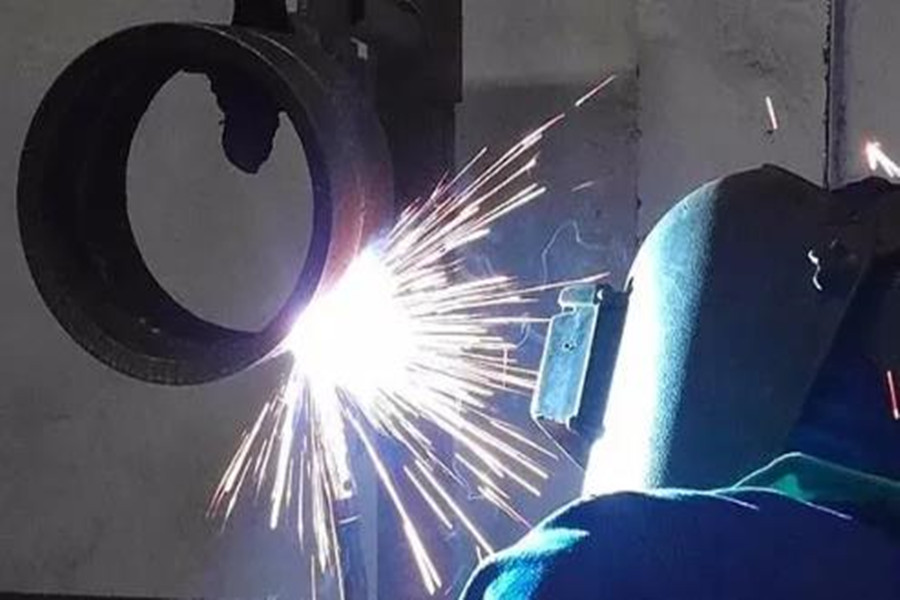
Pipeline welding should meet the following requirements:
1. Pipeline welding should meet the requirements of welding procedure regulations;
2. After the root welding is completed, heat welding should be carried out immediately;
3. The weld bead joints should be polished, and the joints of two adjacent layers should not overlap and should be staggered by more than 30mm;
4. Each welding pass should be welded continuously, and the temperature between passes should be controlled during the welding process;
5. The welding slag on the weld bead should be removed before the next welding;
6. Welding joints should be welded on the same day, and at least 50% of the pipe wall thickness should be completed if it cannot be completed on the same day, and should not be less than 3 layers;
7. During the welding operation, the welder should conduct self-inspection and repair work on the weld bead he welded, and the length of each repair should not be less than 50mm.
After welding the welding joint, the surface welding slag and spatter should be removed. For welds that require post-heating or heat treatment, they should be treated in accordance with the welding procedure regulations. The end of the pipeline should be temporarily plugged after the daily operation. Waterproof measures should be taken for pipelines in water and under-ditch welding.
Welding joints should be marked, and the welding joint markings should include the abbreviation of the project name, section number, stake number, and serial number. The marking can be written on the surface of the anti-corrosion layer at a distance of 1 m from the welding joint (downstream in the direction of oil and gas flow), and Welding records should be made at the same time.
The repair and treatment of welds shall meet the following requirements:
1. All welds with cracks should be removed from the pipeline. Non-crack defects in the weld bead can be repaired directly.
2. Rework of welds should use qualified rework welding procedures. The repair of welds at the same part should not exceed 2 times, and the root should only be repaired once. After repairing, it should be tested according to the original standard.
Non-destructive testing can be carried out only after the welds have passed the visual inspection. The appearance inspection of welds shall meet the following requirements:
1. The appearance and shape of the weld should be uniform, and there should be no cracks, unfused, pores, slag inclusion, splash, arc craters and other defects on the surface of the weld and its heat-affected zone.
2. The surface of the weld should not be lower than the surface of the base metal, the weld reinforcement should be in the range of 0~3mm, and the transition to the base metal should be smooth;
3. The width of each side of the weld surface should be 1~2mm wider than the groove surface;
4. The maximum size of the undercut should meet the following requirements: less than or equal to 0.4mm, less than or equal to 6% of the pipe wall thickness, whichever is less, any length is qualified; greater than 0.4mm and less than or equal to 0.8mm , Greater than 6% of the wall thickness of the pipe, less than or equal to 12.5%, whichever is the smaller, no more than 50mm in any continuous length of the weld of 300mm, or 1/6 of the length of the weld, whichever is the smaller The value is qualified; greater than 0.8mm, greater than 12.5% of the tube wall thickness, whichever is less, any length is unqualified.
Both radiographic testing and ultrasonic testing should have a qualified level of II. During the re-inspection and spot check of radiographic testing, if one weld is unqualified, the welds welded by the welder or assembly line welder group on that day or in the inspection section shall be double-checked. If there are still unqualified welds, the rest shall be dealt with. The welds are inspected one by one by radiography.
When the pipeline adopts automatic welding, automatic ultrasonic inspection should be adopted, the inspection ratio should be 100%, and radiographic inspection should be carried out for re-inspection.
The difference between fixed welds, rotary welds, and prefabricated welds in pipeline welding
No matter where the weld is located, it is actually an accumulation of welding experience. For novices, the simple position is the basic exercise, starting from the rotation, and then to the fixed position exercise.
Corresponding to fixed welding in pipeline welding is rotary welding. Fixed welding means that the welded joint cannot be moved after the piping group is paired. During the welding process, it changes with the welding position (horizontal, vertical, elevation, and elevation changes).
Rotating weld is the turning weld during the welding process so that the welder can perform welding in an ideal position (horizontal, vertical, elevation, or tilt).
In fact, to put it simply, the fixed welded joint is the weld of the on-site construction welding, which is relative to the prefabricated pipeline.
The fixed welding joint is the pipe does not move, and the welder performs all-round welding, especially when the welding is overhead, the welding method is not easy to operate, and the welder has high technical requirements and is prone to defects. It is usually constructed on the pipe gallery;
The rotating port is the pipe that can be rotated. The welding position is basically flat welding or vertical welding. The welding operation is convenient and there are few defects. The construction is basically on the ground or floor.
In the welding inspection, in order to prevent all the rotating ports from being selected for inspection, the qualified rate is high, and a certain percentage of fixed ports must be sampled to ensure the welding quality of the entire pipeline. The "Pressure Piping Safety Technical Supervision Regulations-Industrial Piping" stipulates that the inspection ratio of fixed weld joints shall not be less than 40%.
Under normal circumstances, we use fixed ports as movable ports. The movable port is a pipe prefabricated welding port, and the pipe section can be moved or rotated when the pipe is prefabricated off-site. The fixed port is a welding port installed on site, and the pipeline cannot be moved or rotated at this time.
The long-distance pipeline piping code is called "crash", and it is required that "100% radiographic inspection should be carried out." The welding angle of the dead hole is complicated, and the welding quality is not easy to guarantee.
The fixed weld is relative to the rotary weld.
Rotational welding joint refers to the welding joint can be rotated freely according to the most comfortable angle of the electric welding work during the pipeline prefabrication welding process, and the welding quality is relatively stable, so electric welders like this kind of welding joint.
However, due to the requirements of site conditions or the conditions of the workpiece itself, the welds of some workpieces can only be fixed, which is the so-called fixed weld. When the fixed welding joint is installed and welded, there is only one direction welding joint. This kind of welding joint is difficult to weld, and the proportion of non-destructive testing is higher.
In some pipeline construction specifications, the proportion of fixed weld inspections is clearly specified. Because the angle of the fixed weld is different, manual welding will fluctuate, and the quality of the weld will have a certain impact. For example, for the fixed weld of a steel pipe, the welder must perform all-position welding. The requirements for the welder are very high. Of course, the technique is high and the technical level is high. A good welder does not matter.
In construction management, the number of fixed openings should be reduced as much as possible. On the one hand, the welding quality can be controlled, and at the same time, the number of wounds can be reduced and the cost can be reduced.
Link to this article: Do you know that there is so much attention to pipe welding?
Reprint Statement: If there are no special instructions, all articles on this site are original. Please indicate the source for reprinting:https://www.cncmachiningptj.com/,thanks!
 PTJ® provides a full range of Custom Precision cnc machining china services.ISO 9001:2015 &AS-9100 certified. 3, 4 and 5-axis rapid precision CNC machining services including milling, sheet metal to customer specifications,Capable of metal & plastic machined parts with +/-0.005 mm tolerance.Secondary services include CNC and conventional grinding, laser cutting,drilling,die casting,sheet metal and stamping.Providing prototypes, full production runs, technical support and full inspection.Serves the automotive, aerospace, mold&fixture,led lighting,medical,bicycle, and consumer electronics industries. On-time delivery.Tell us a little about your project’s budget and expected delivery time. We will strategize with you to provide the most cost-effective services to help you reach your target,Welcome to Contact us ( [email protected] ) directly for your new project.
PTJ® provides a full range of Custom Precision cnc machining china services.ISO 9001:2015 &AS-9100 certified. 3, 4 and 5-axis rapid precision CNC machining services including milling, sheet metal to customer specifications,Capable of metal & plastic machined parts with +/-0.005 mm tolerance.Secondary services include CNC and conventional grinding, laser cutting,drilling,die casting,sheet metal and stamping.Providing prototypes, full production runs, technical support and full inspection.Serves the automotive, aerospace, mold&fixture,led lighting,medical,bicycle, and consumer electronics industries. On-time delivery.Tell us a little about your project’s budget and expected delivery time. We will strategize with you to provide the most cost-effective services to help you reach your target,Welcome to Contact us ( [email protected] ) directly for your new project.

- 5 Axis Machining
- Cnc Milling
- Cnc Turning
- Machining Industries
- Machining Process
- Surface Treatment
- Metal Machining
- Plastic Machining
- Powder Metallurgy Mold
- Die Casting
- Parts Gallery
- Auto Metal Parts
- Machinery Parts
- LED Heatsink
- Building Parts
- Mobile Parts
- Medical Parts
- Electronic Parts
- Tailored Machining
- Bicycle Parts
- Aluminum Machining
- Titanium Machining
- Stainless Steel Machining
- Copper Machining
- Brass Machining
- Super Alloy Machining
- Peek Machining
- UHMW Machining
- Unilate Machining
- PA6 Machining
- PPS Machining
- Teflon Machining
- Inconel Machining
- Tool Steel Machining
- More Material

